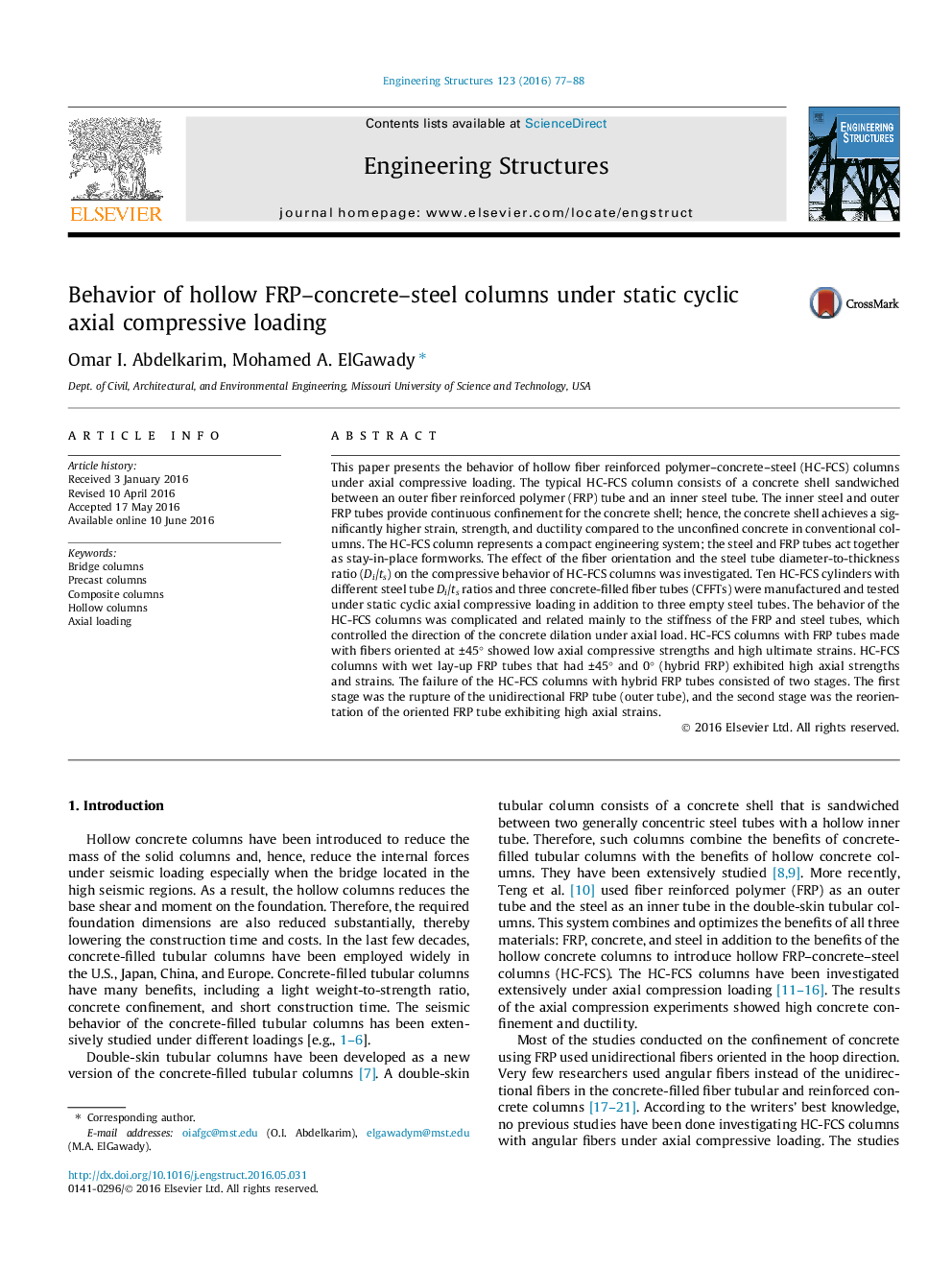| کد مقاله | کد نشریه | سال انتشار | مقاله انگلیسی | نسخه تمام متن |
|---|---|---|---|---|
| 265669 | 504323 | 2016 | 12 صفحه PDF | دانلود رایگان |

• Fiber orientation and steel tube D/t effects on HC-FCS were investigated.
• The behavior of the HC-FCS is function in the stiffness of the FRP and steel tubes.
• The HC-FCS with hybrid FRP tubes (±45°/0°) had a better performance than those having fiber at ±45°.
• The failure of the HC-FCS consisted of rupture of the unidirectional FRP tube followed by reorientation of the ±45° FRP.
This paper presents the behavior of hollow fiber reinforced polymer–concrete–steel (HC-FCS) columns under axial compressive loading. The typical HC-FCS column consists of a concrete shell sandwiched between an outer fiber reinforced polymer (FRP) tube and an inner steel tube. The inner steel and outer FRP tubes provide continuous confinement for the concrete shell; hence, the concrete shell achieves a significantly higher strain, strength, and ductility compared to the unconfined concrete in conventional columns. The HC-FCS column represents a compact engineering system; the steel and FRP tubes act together as stay-in-place formworks. The effect of the fiber orientation and the steel tube diameter-to-thickness ratio (Di/ts) on the compressive behavior of HC-FCS columns was investigated. Ten HC-FCS cylinders with different steel tube Di/ts ratios and three concrete-filled fiber tubes (CFFTs) were manufactured and tested under static cyclic axial compressive loading in addition to three empty steel tubes. The behavior of the HC-FCS columns was complicated and related mainly to the stiffness of the FRP and steel tubes, which controlled the direction of the concrete dilation under axial load. HC-FCS columns with FRP tubes made with fibers oriented at ±45° showed low axial compressive strengths and high ultimate strains. HC-FCS columns with wet lay-up FRP tubes that had ±45° and 0° (hybrid FRP) exhibited high axial strengths and strains. The failure of the HC-FCS columns with hybrid FRP tubes consisted of two stages. The first stage was the rupture of the unidirectional FRP tube (outer tube), and the second stage was the reorientation of the oriented FRP tube exhibiting high axial strains.
Journal: Engineering Structures - Volume 123, 15 September 2016, Pages 77–88